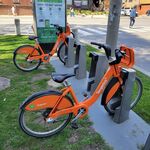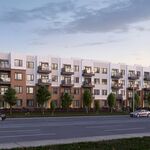No. We’ll still be in poor shape after the implementation of the Relief Line South. Yonge Line will still be over capacity, and the Relief Line North will need to progress immediately. Seriously, we can’t rest on our laurels. Need to keep pushing forward.
And the Relief Line is only one major component of many that need to be implemented. Our streetcar system remains slow, over capacity and unreliable. It’ll probably remain that way until the Relief Line West is implemented. Line 2 needs a new signalling system. Our bus system, which carries more trips than the subway, needs a lot of work.
Toronto's transit won't be in a good situation until the following are implemented:
1. Relief Line South: This project is important as it will relieve Bloor-Yonge Station and enable the development of Relief Line North. This project is not being advanced quickly enough
2. Relief Line North: The Yonge Line will remain over capacity without Relief Line North. Without this project, Toronto transit is fundamentally broken. It needs to be implemented immediately. Beyond the reduction in Yonge crowding, this project will enable people from eastern Toronto to travel Downtown much quicker than today (in some case, more than twice as fast).
3. Relief Line West: Downtown's population will more than double by the 2030s. That's not very long from now (less than 20 years). Our streetcar system is slow, unreliable and can't even handle
today's Downtown population. Areas like Liberty Village and Humber Bay Shores are underserved by transit. Expansions to the surface transit are a bandaid solution. The only way to fix this is with the Relief Line West. We're going to have a really bad situation on our hands without it. Beyond Downtown, University Line and St. George Station crowding is expected to become increasingly problematic into the 2040s. The Relief Line West will address this.
4. GO Transit TTC fare integration
5. Eglinton East LRT to UTSC: Transportation within Scarborough is in a sad state. And it will remain in a sad state until a few things are implemented. The most important component is the Eglinton East LRT. This will be the transport backbone of Scarborough, greatly improving travel times and reliability for travel within Scarborough, and to other parts of the city. The peak ridership of this project is equal to the eastbound peak ridership of the central Crosstown LRT.
6. Bus improvements: Our bus system is in really poor shape. There are a lot of small upgrades that are necessary to get it into decent shape. Specifically, I'd like to see the bus fleet increased, so the TTC can increase the number of spares on hand, and improve crowding standards. Some of our busiest routes should be upgraded to BRT where possible. Exceptionally poor performing routes, such as Jane, might need to be upgraded to LRT.




